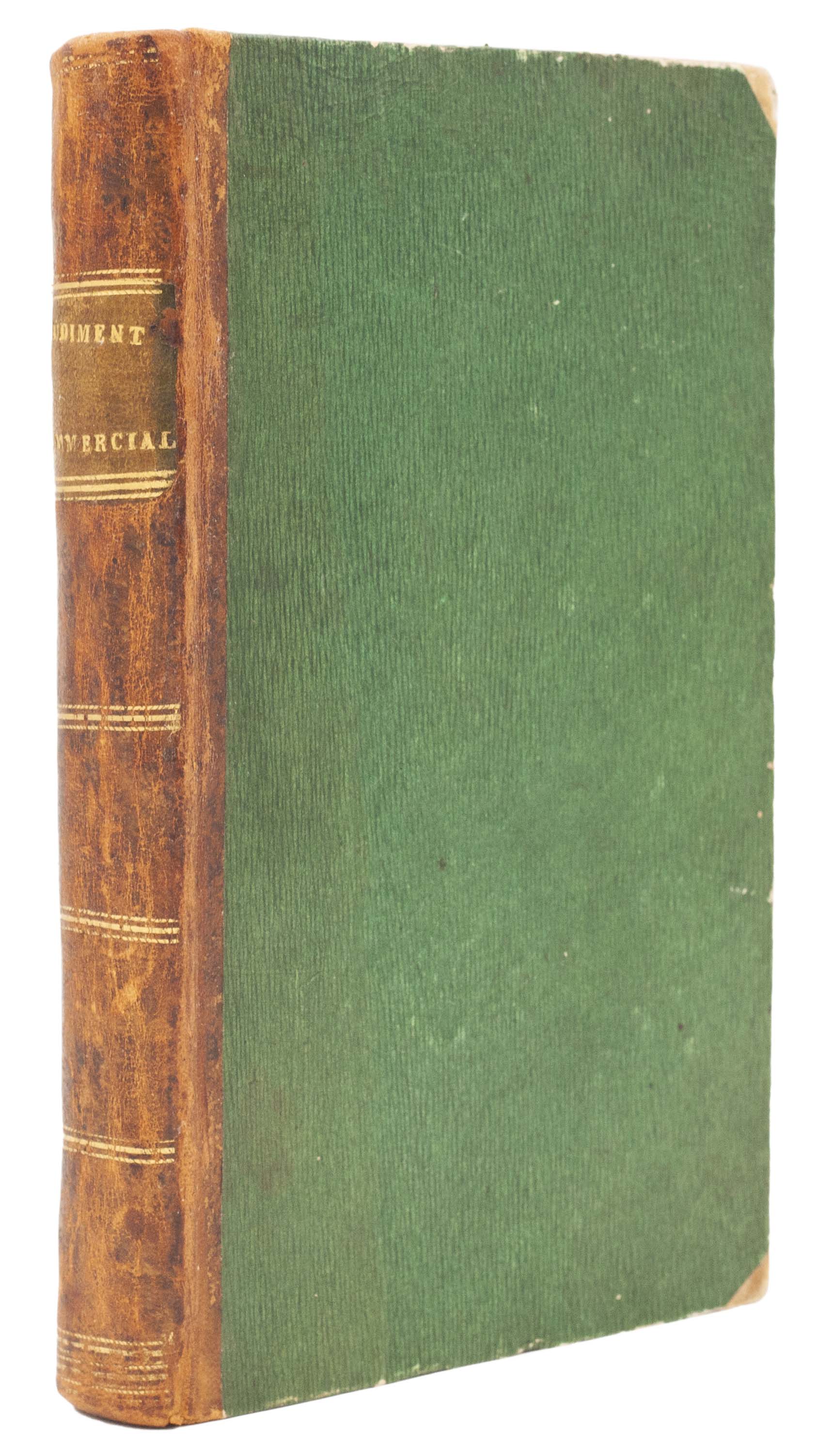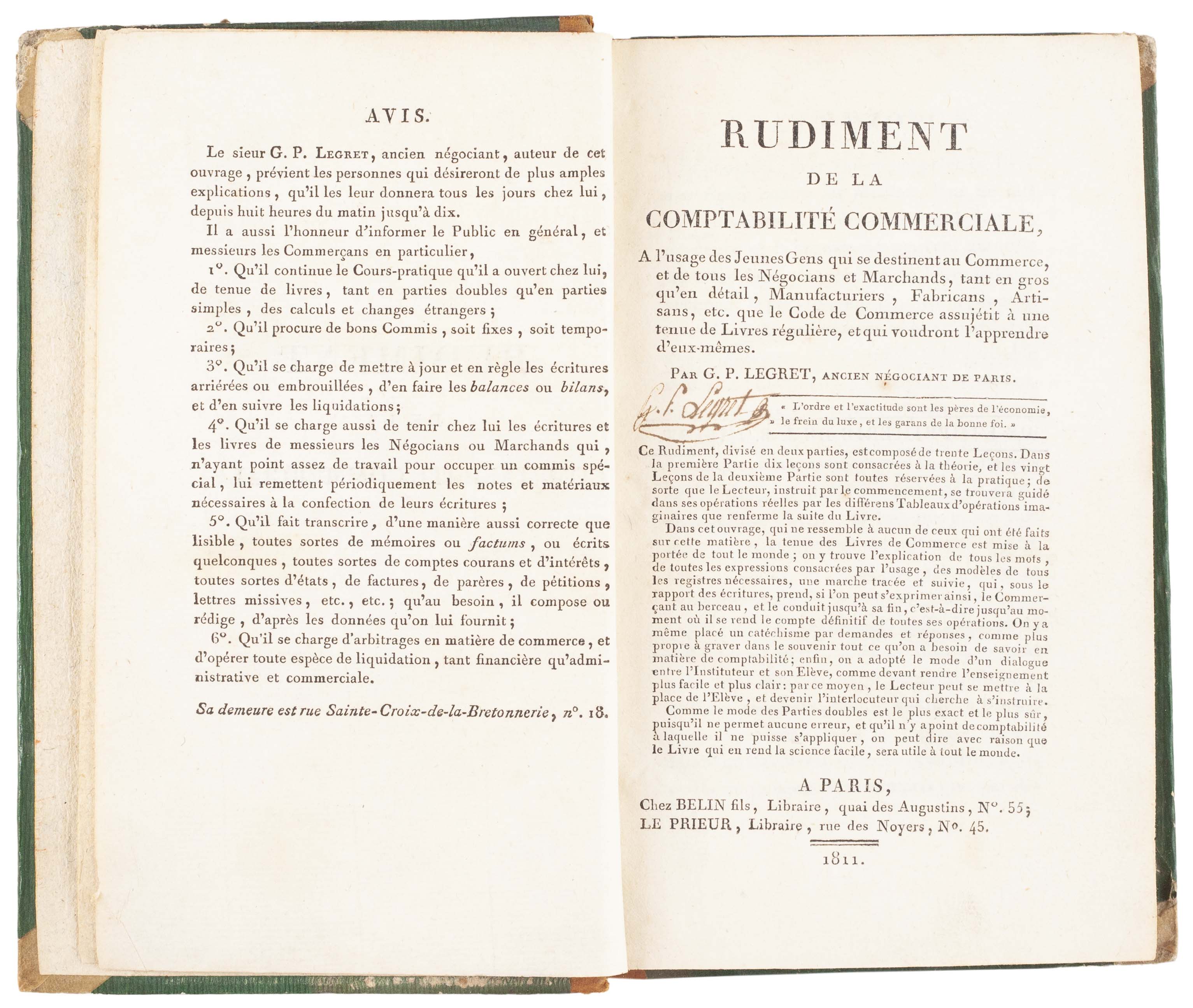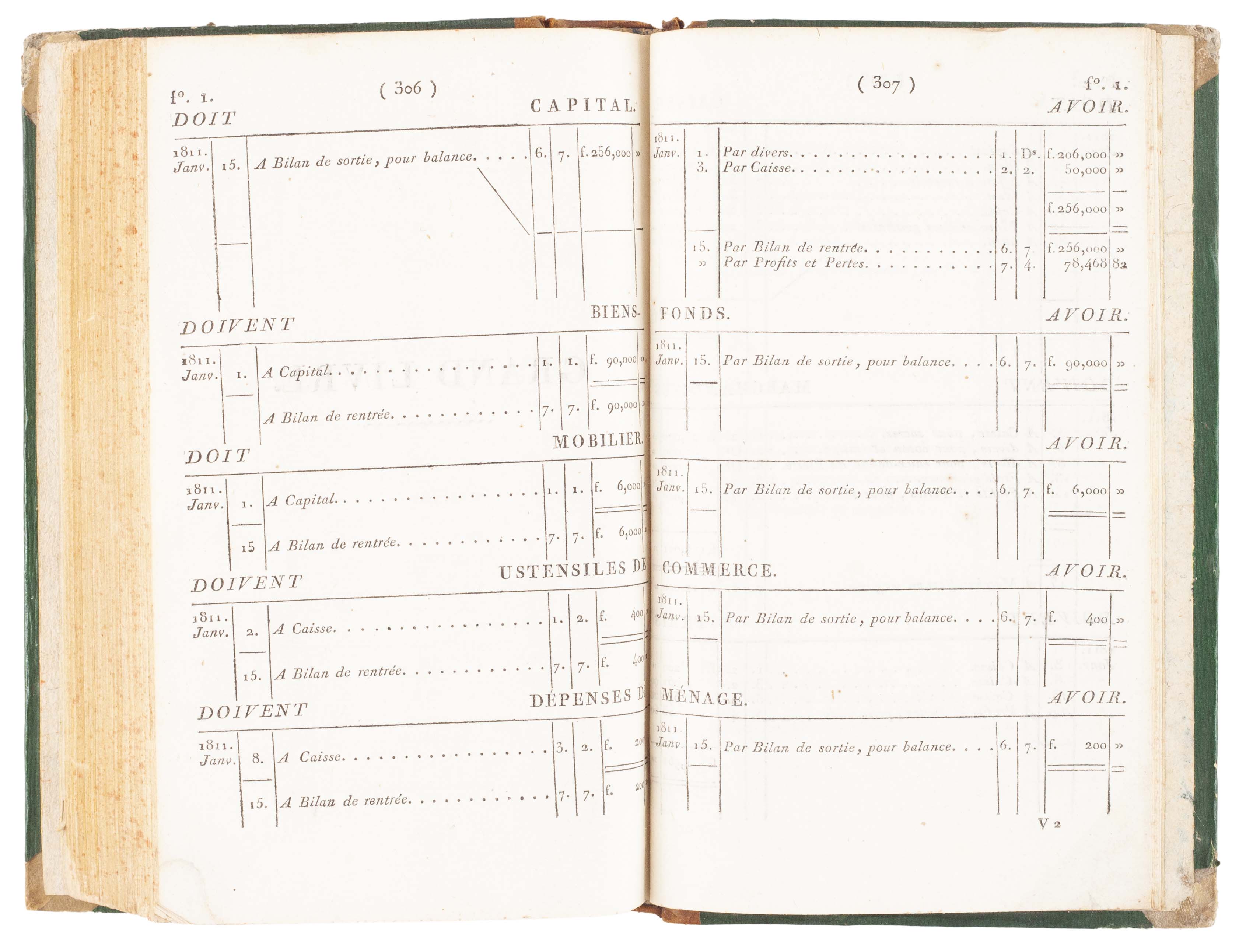


LEGRET, G.P.
Rudiment de la comptabilité commerciale A l’usage des jeunes gens qui se destinent au commerce et de tous les négocians et marchands tant en gros qu’en détail manufacturiers fabricans artisans etc. que le Code de Commerce assujétit à une tenue de livres régulière et qui voudront l’apprendre d’eux-mêmes …
Paris, Belin fils and le Prieur, 1811.
8vo, pp. xiv, 15-320; p. 258ff composed of tables; occasional spotting, but largely clean and fresh, with signature of author in ink on title-page; in contemporary sheep-backed green boards, vellum tips, flat spine ruled in gilt with gilt-lettered green morocco label; some wear, but still a very attractive copy.

Added to your basket:
Rudiment de la comptabilité commerciale A l’usage des jeunes gens qui se destinent au commerce et de tous les négocians et marchands tant en gros qu’en détail manufacturiers fabricans artisans etc. que le Code de Commerce assujétit à une tenue de livres régulière et qui voudront l’apprendre d’eux-mêmes …
Scarce first edition of this introduction to bookkeeping for lay people, addressed by the author to the young who are destined for trade, businessmen and merchants, artisans and manufacturers, and anyone else who falls under the Napoleonic Code de Commerce of 1807, which required businesses to keep up-to-date accounts. Legret states in his preface that, just as a lawyer needs to study law, and a physician medicine, so should the businessman be educated in running a business, but there are no schools or colleges to teach such skills; this is an attempt to fill that gap.
Divided into thirty lessons, Legret’s book discusses both the theory and practice of bookkeeping, with every piece of terminology explained, in a way, Legret claims, entirely unknown in other works on the subject. The reader is guided by a catechism of questions and answers, and a dialogue between teacher and student: ‘by this means, the reader can put himself in the place of the student, and become the interlocutor who seeks to instruct himself’. The final part of the book is occupied by a series of sixty-odd examples, to guide the reader through various possible scenarios.
Although now rare, the work obviously met with some success: we know of at least three editions in the same year, and further editions appeared in 1824 and 1837.
Outside France, OCLC records just one copy, at Columbia.

